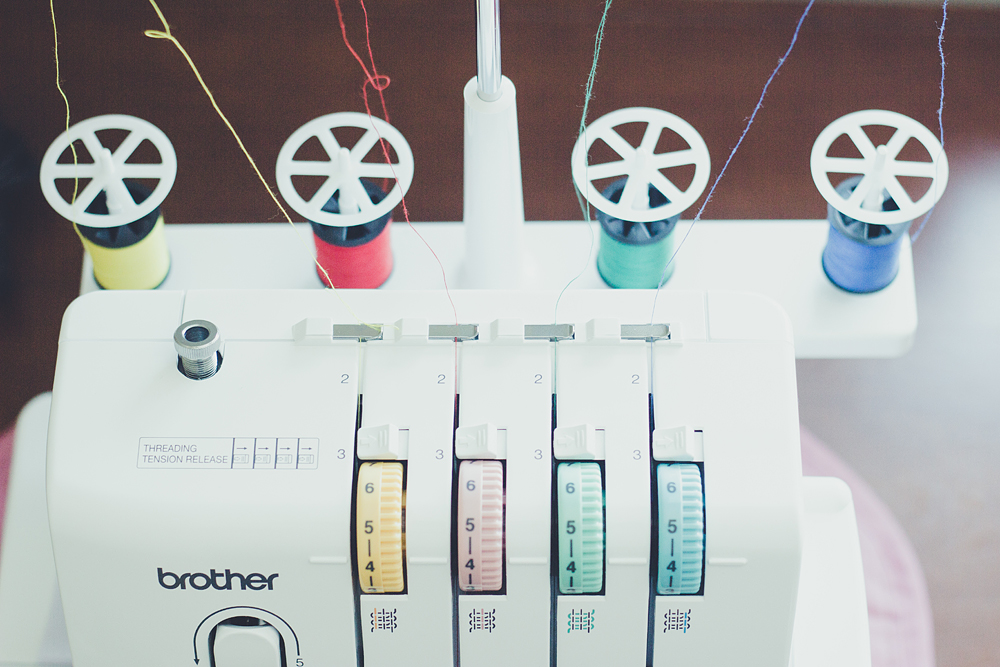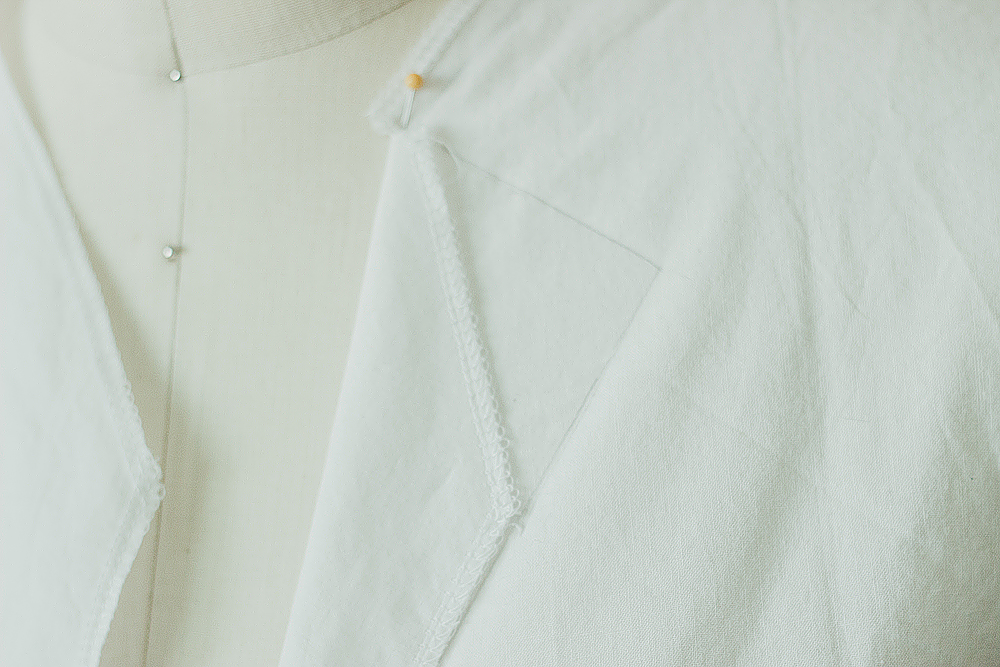I’m SUPER excited to share my latest Big Kid purchase: my first serger!! I’ve been saving up for my first one for awhile now, and it came in the mail two months ago! I’ve been so thrilled to finally be able to work with knits, and especially having clean finishes for all of my costumes/garments!

After what felt like an eternity of research and comparison, I finally decided to go with the Brother 1034D. During school, I didn’t spend a lot of time with our industrial sergers. Admittedly, I shied away from them. Most people dreaded using them because if anything came undone, you would have to rethread them yourself. Looking back now, I really should have just practiced like I was encouraged to. Oh well…
In the long run, I intend to invest in industrial machines. Living in an apartment, however, let alone one that isn’t the first floor, there are a lot of inconveniences that come with industrial machines — namely the weight and amount of space it takes. These are the factors I consider with each purchase:
Cost
Features and Usability
Longevity
Ease of storage
Since I’m still young, and where I live next may be more or less accessible than where I live now, I have to focus on making purchases that I can easily transfer from point A to point B. Let’s say the next place I live doesn’t have an elevator, or the staircase is outdoors (very common for older apartment complexes). Maybe my next room is smaller than the one I have now. Getting an industrial machine (and the industrial machine table) would make it impossible for me to transfer up and down a staircase, so I would have to hire someone to move it around — an added cost. Right now I need something that’s easy to carry, pack, and store.


What do these numbers mean without spending hours reading the customer reviews, though? I myself am a skeptic of the “best sellers” ranking, since there are several factors that go into the algorithms. Being an avid online shopper, especially an Amazon one, over the years I’ve found that the Best Sellers of x category can change on a dime based on sales, not on reviews. Depending on the ever-changing, ever-growing market of x category, the #1 Best Seller champion for a product can have a poor rating compared to the newer, rising star of #5. But it’s the #1 Best Seller, right? Shouldn’t I buy it too, since so many people are also getting it? My recent stint in attempting to look for an affordable, reliable, portable aircon has shown me otherwise… It’s important to read verified customer reviews before any other number tries to win you over.
Despite my skepticism, the Brother 1034D has a drastic amount of positive response in its 5-star ratings compared to its 4-stars and under. The consumers of a product know what they want out of it, and they will generally let you know what they think in the reviews.
My method of reading reviews are to thoroughly look at the first 3 Top Customer Reviews, and then spend a good chunk of time on the 4- and 3-star reviews. 1- and 2-star reviewers tend to have ended up with damaged, defected items, which (though frustrating) are usually resolved with a replacement/return under warranty.
For this machine, the 1- and 2-stars make up 7% of the total customer reviews, and I found they all had very valid points. It’s a cheap price for a serger, and it’s no industrial machine made of the stuff in the 1980s and prior. I’ve read and heard countless times that they just don’t make machines like they used to, serger or sewing. But, if you’re used to a Juki that has loyally sewn through 20+ years of intense use, you’re not going to find the same horsepower in another brand for a quarter, even half of the price.

As far as weight goes, this serger is very compact, and I have it on my computer desk without it obstructing much. Eventually I want to clean my closet and store it there, but it has yet to bother me. It’s much heavier and feels more solid than my sewing machine (also a Brother), while still being easy to move around.
Out of the box, the serger is threaded with color-coded spools to illustrate which facilitates which.
From left to right:
Yellow: Left Needle
Red: Right Needle
Green: Upper Looper
Blue: Lower Looper
Out of the box visual of a serged piece of fabric. I highly recommend keeping this for future tension troubleshooting (as well as committing it to memory!)
Keeping costs, weight, and space in mind, in the end I just needed something to start out with. Something that’s reliable and will get me through fairly basic stuff. I’ve never personally owned a serger before, but I knew I wanted something I could sew and hem knits with, something that would give me clean finishes on wovens. Reading the manual taught me that I could even do rolled hems — something sorely needed for my chiffon obsession! It was such a pleasant surprise.
I think a lot of the times, I get bogged down with review research that I forget how easy it is to just pick something off the shelf and buy it. I could ask all my friends what machine they use, and all machines will most likely be different. After all that’s said and done, I won’t know how far a machine will take me until I take it there. There comes a point where I have to decide and take the plunge. If I don’t like it, I can return it.
So, I eventually took the plunge for this machine, and I love it so far. I didn’t take enough advantage of our industrial sergers (mostly due to my fear of threading it), but working in alterations at my old job allowed me to thread a serger over and over (and over and over and over…) again – eliminating my fear/uncertainty in threading. Now I just bust it open and go through the motions like it’s muscle memory. It helps that the Brother 1034D has very clear, easy-to-follow diagrams for threading – and it has very thorough instructions in the manual as well. If you’re going to purchase this machine (or any machine), PLEASE keep the manual and booklets. They’re so, so, so useful. The spools must be threaded in a very specific order, which is also easily found in the manual (Green Blue Red Yellow, for people that prefer visuals, like me).
Some of my muslin test fits for Rin’s jacket using my new serger!
♥
All in all, if you’re new to serging and serger machines, I recommend sitting down and doing the research, but don’t let your research stress you out with specs. Make a list of what you want to use it for, assess your budget, read customer reviews, ask around, and decide for yourself. I still have a lot to learn about sergers, but I do know that I love this one so far!










